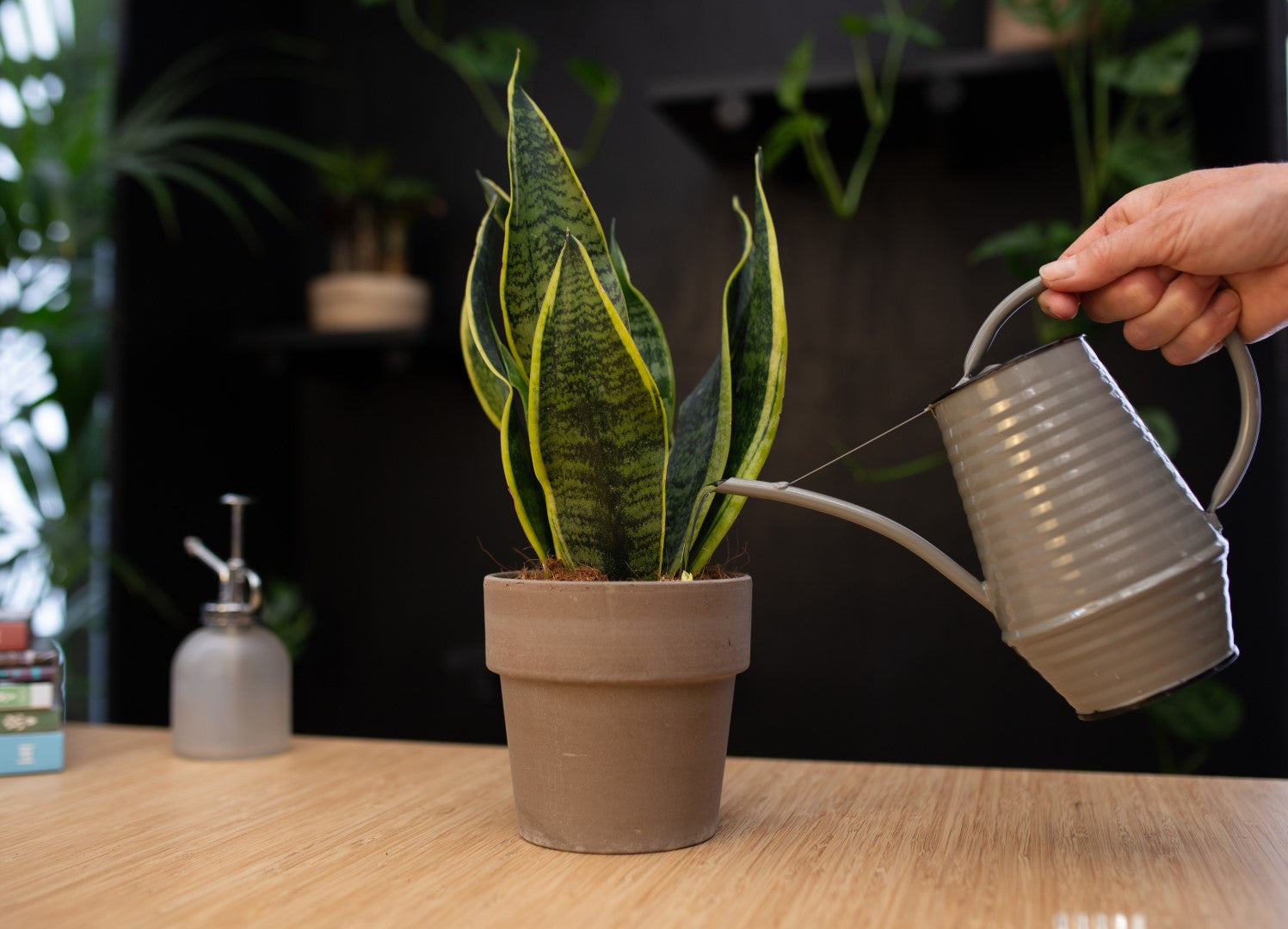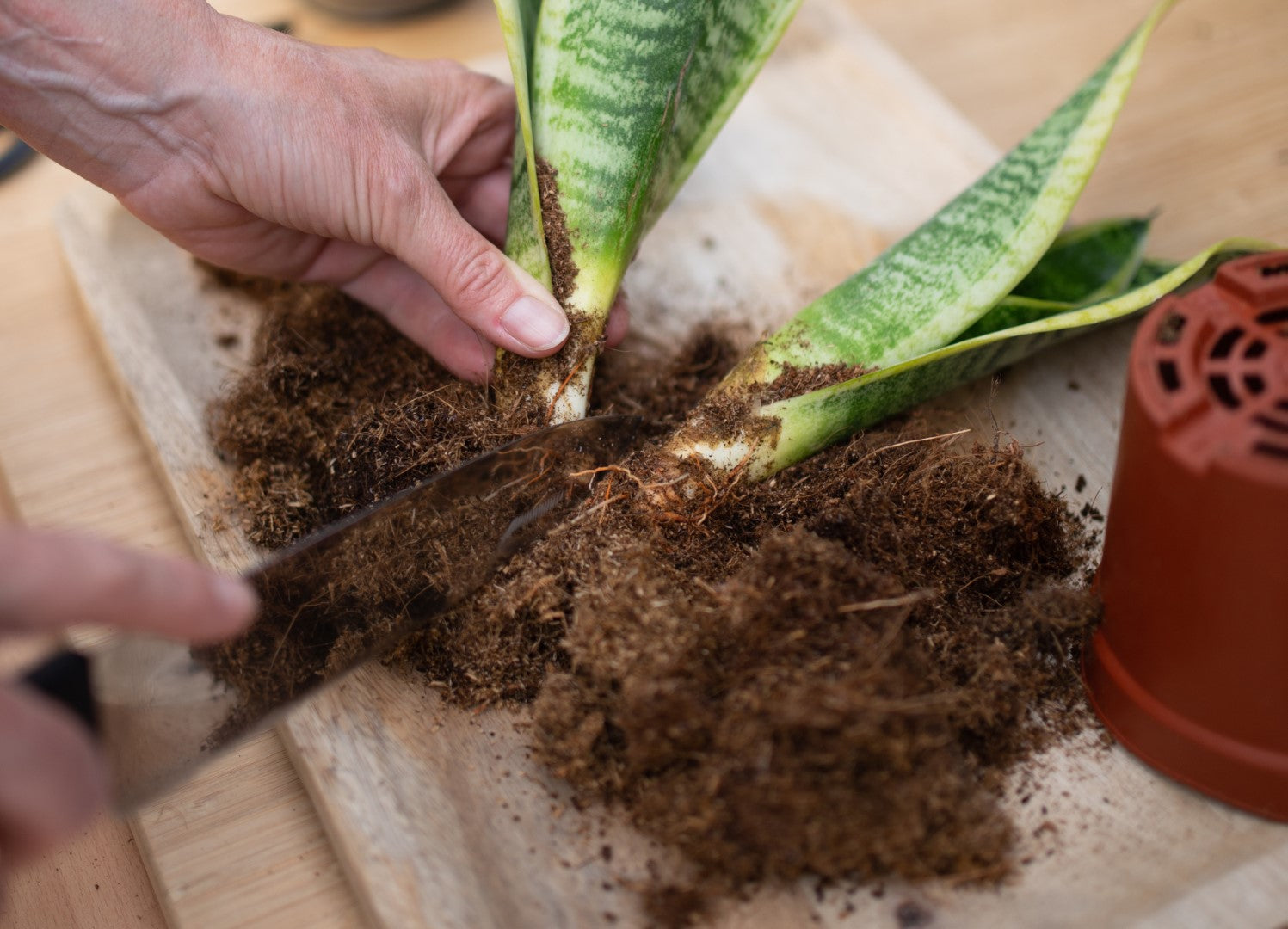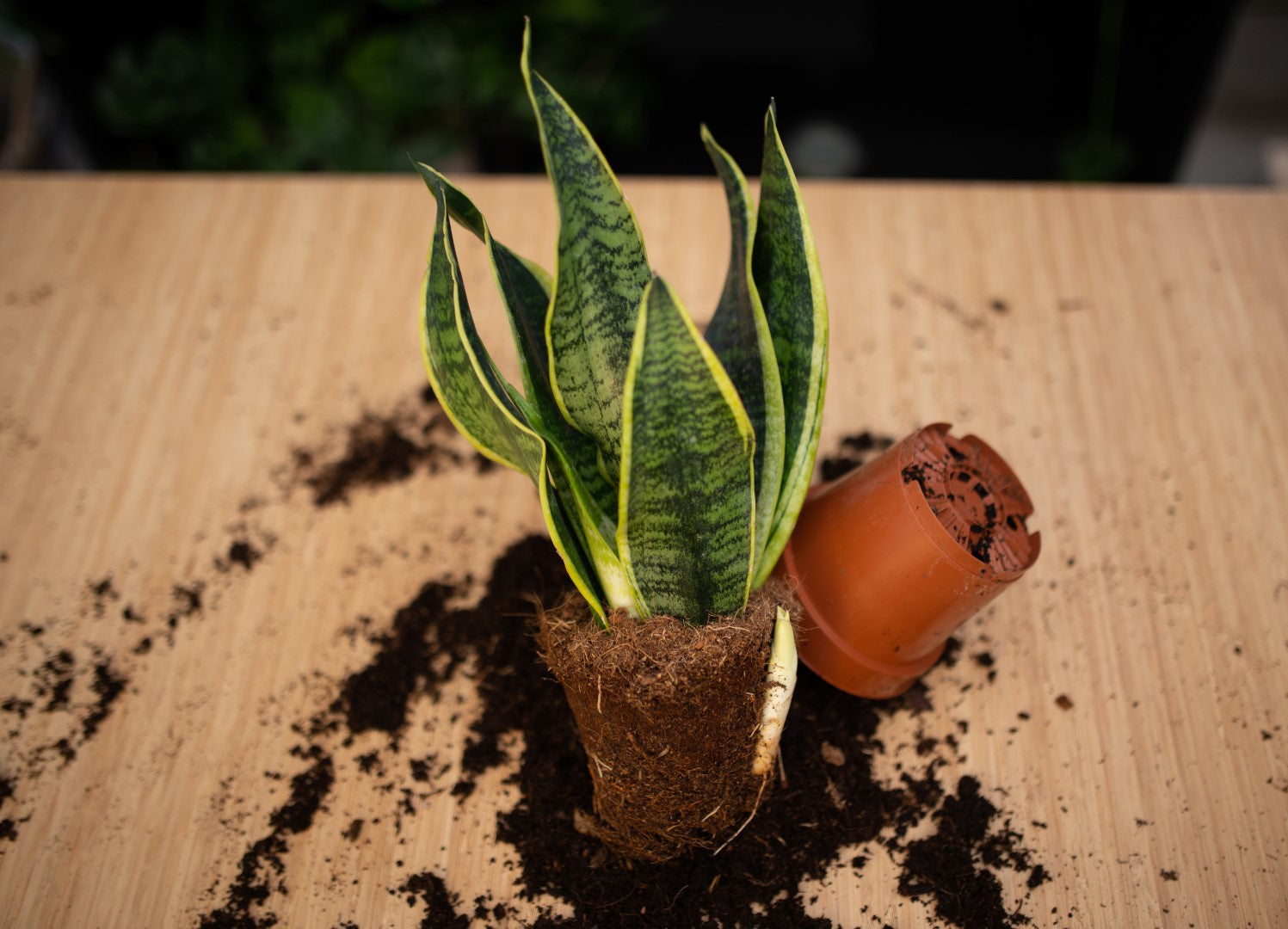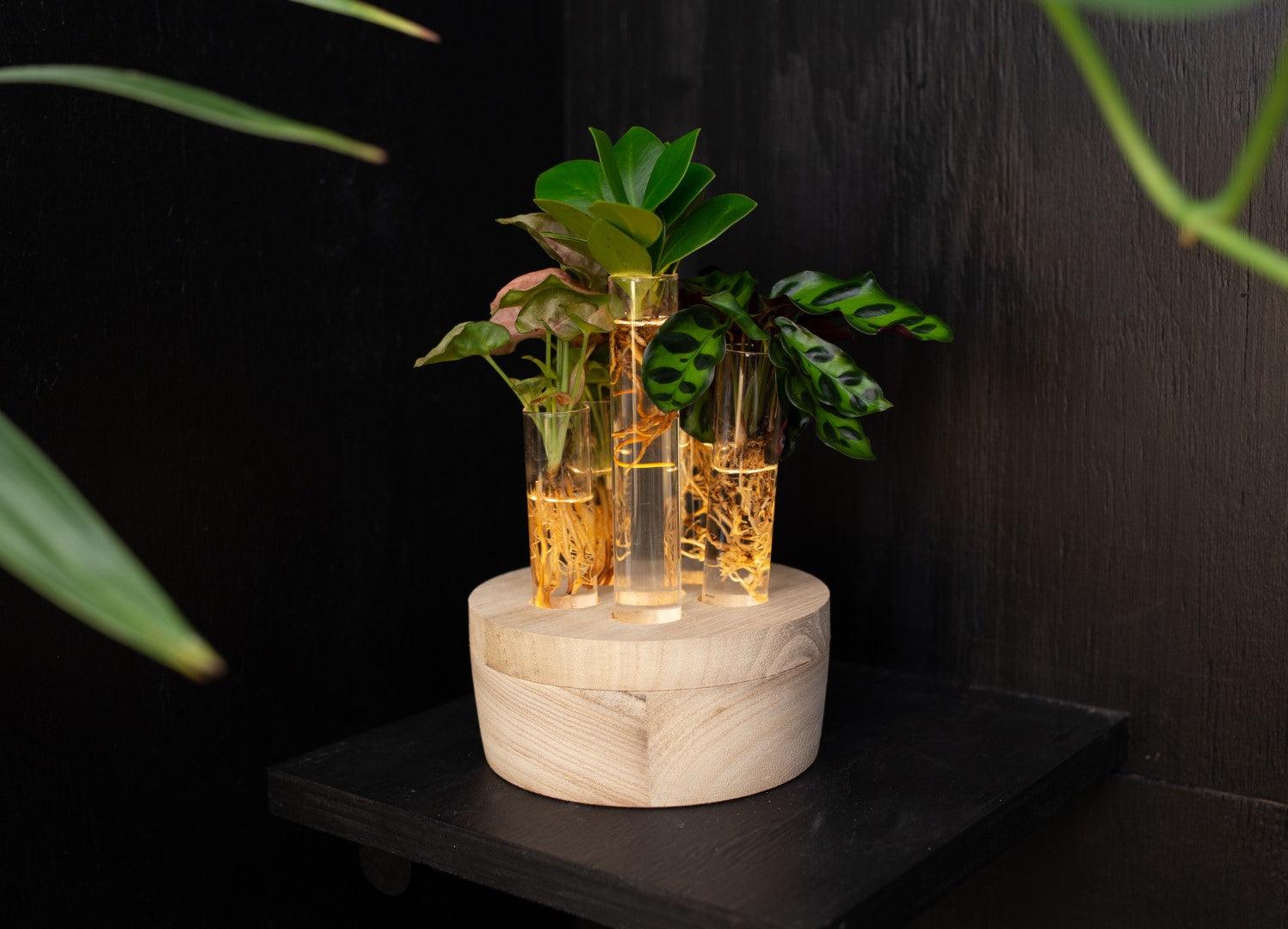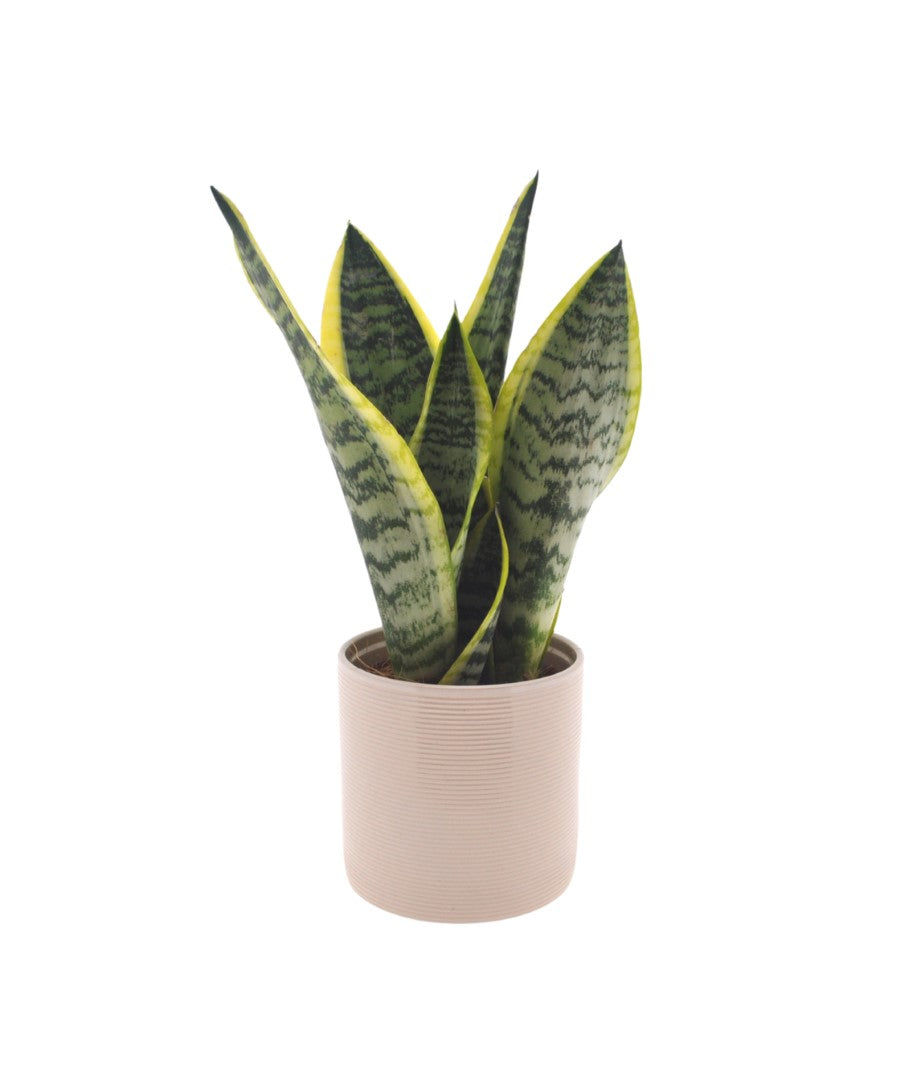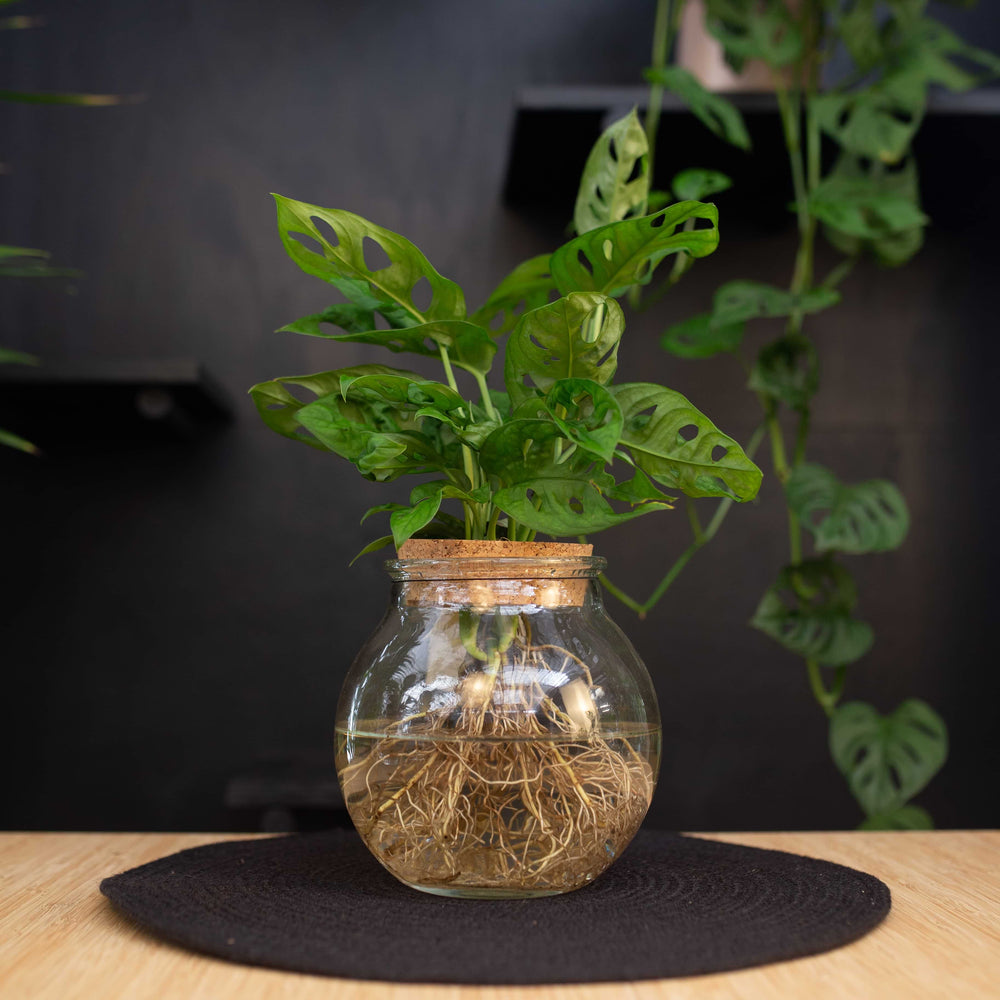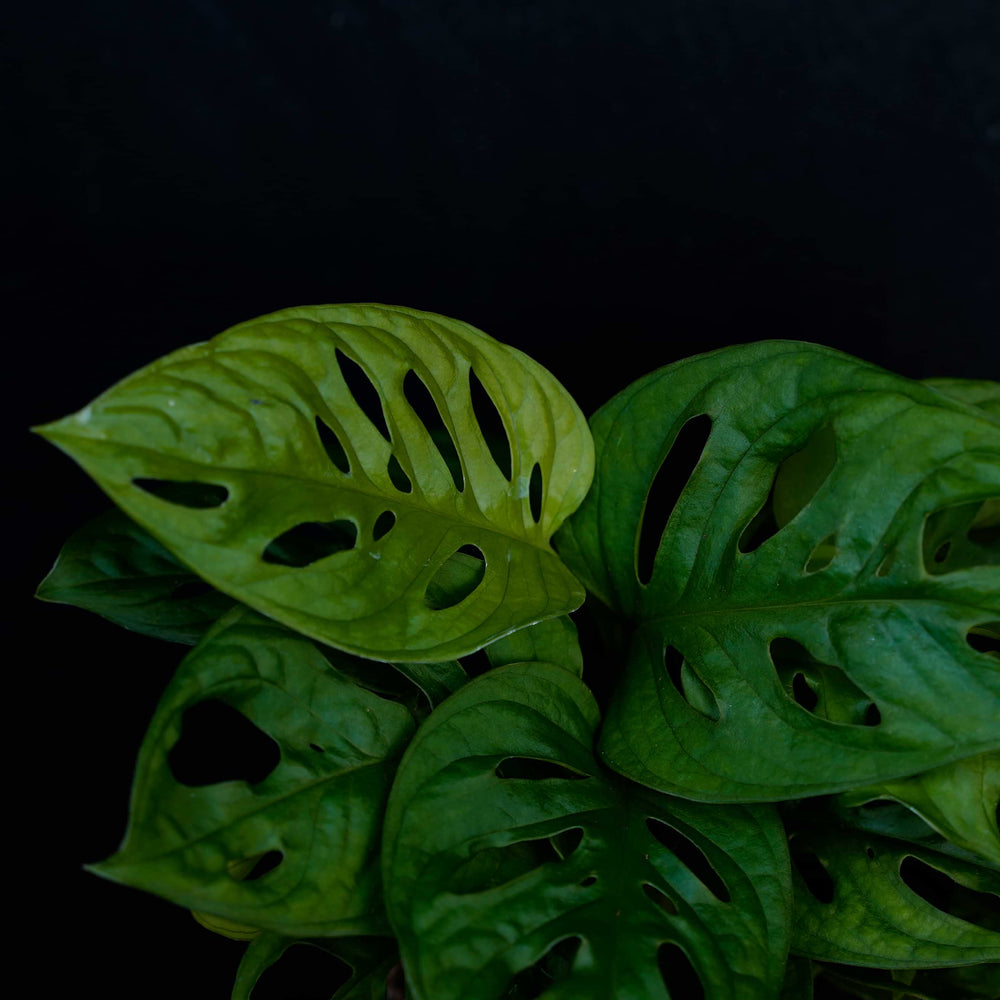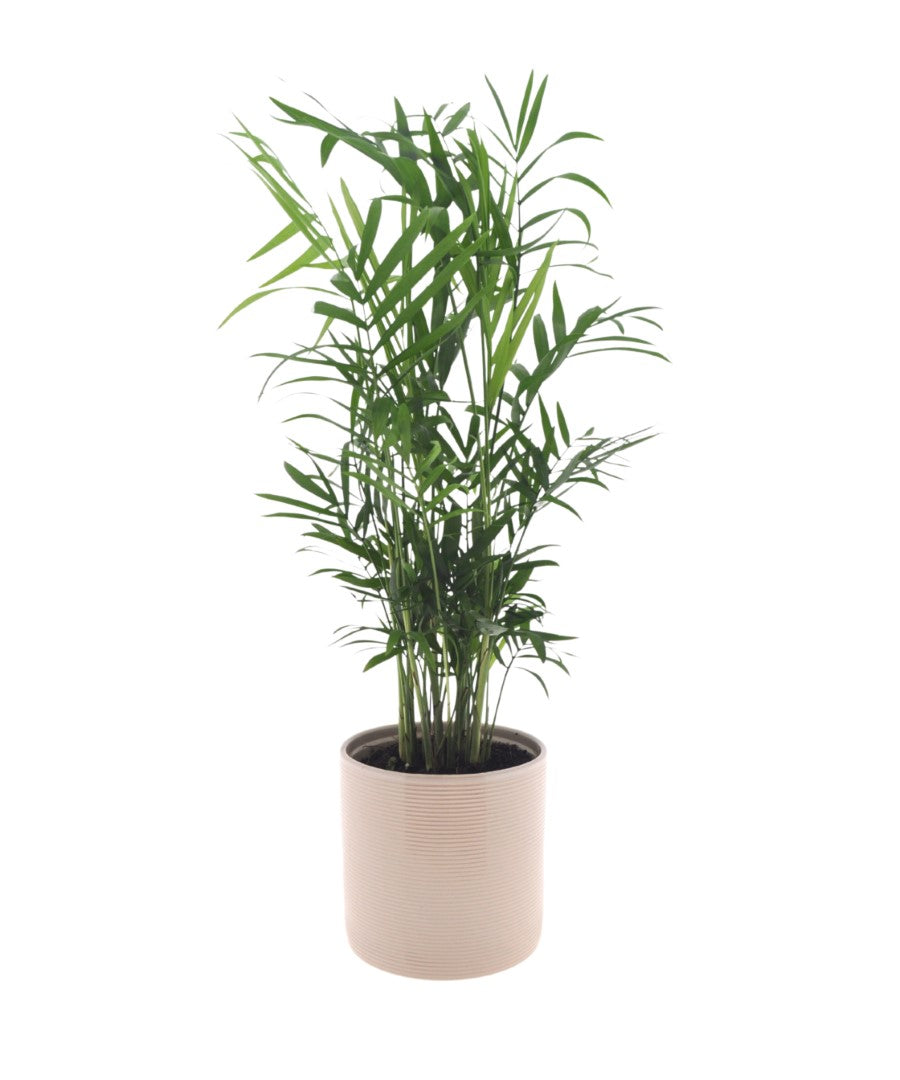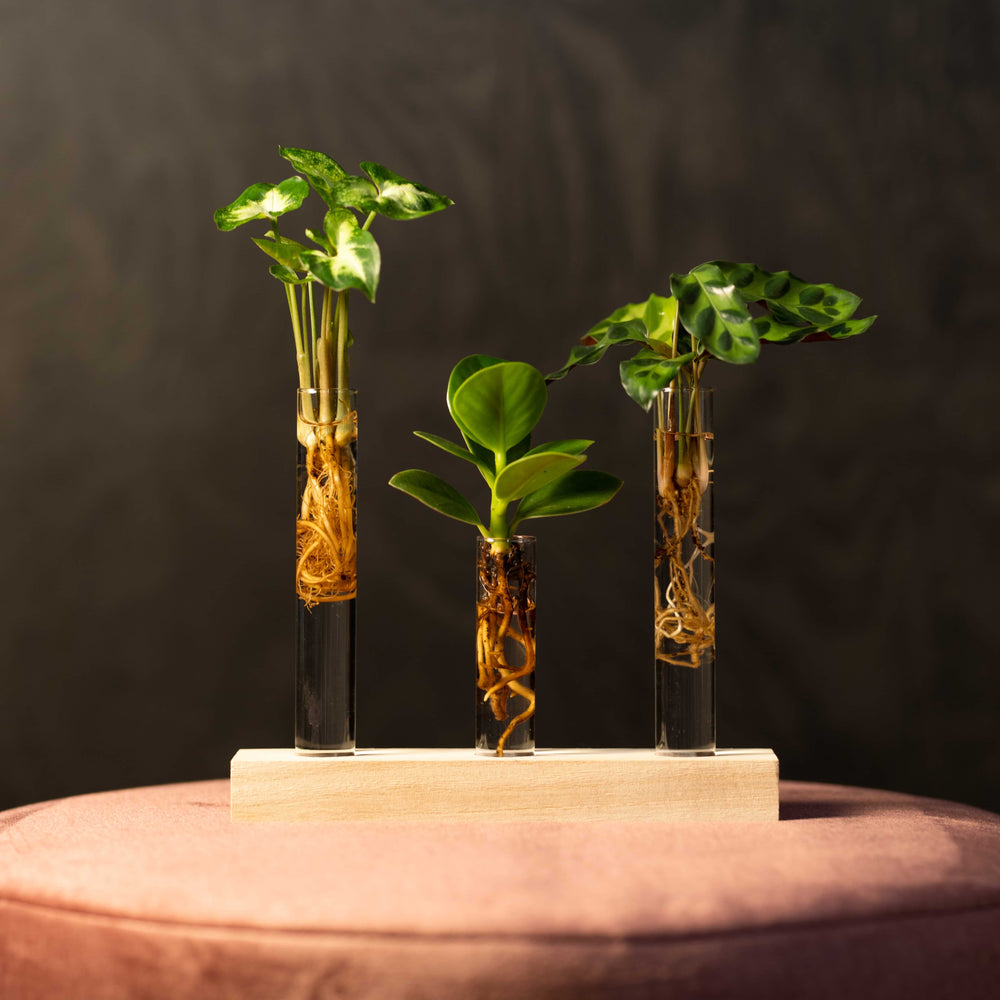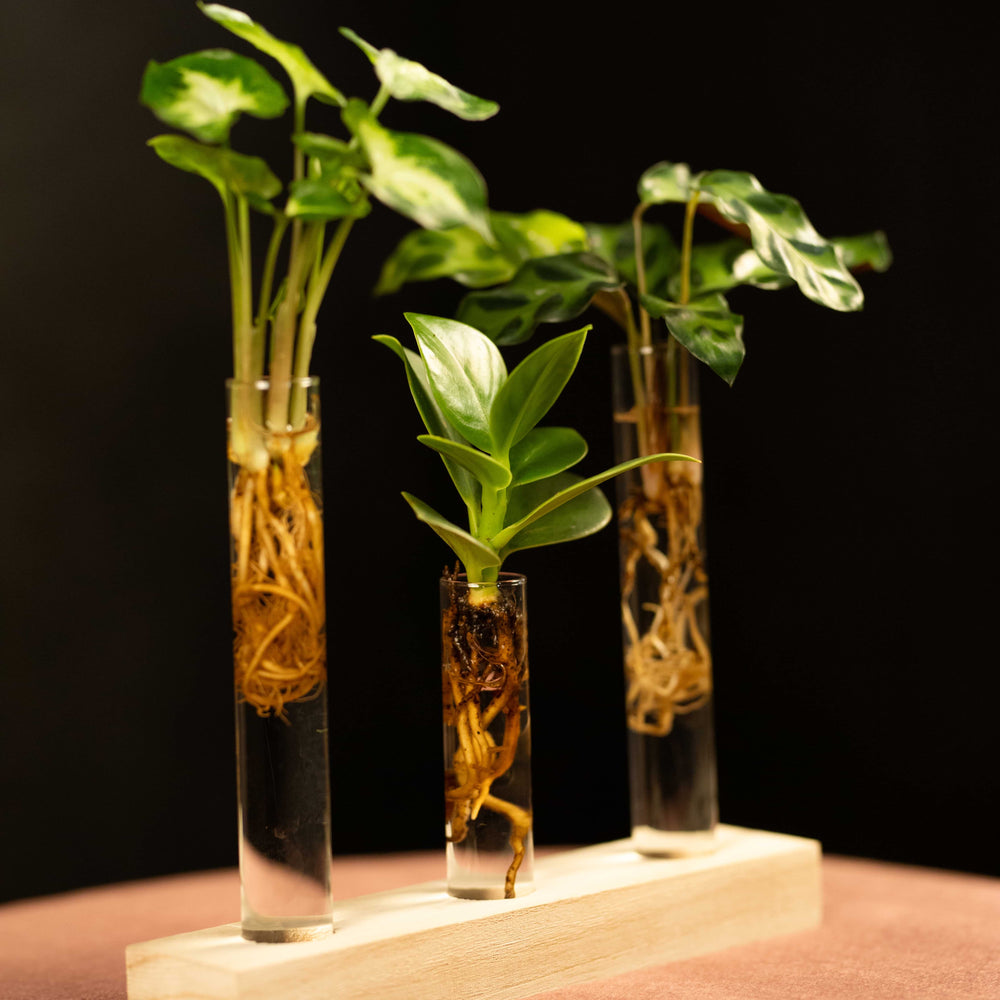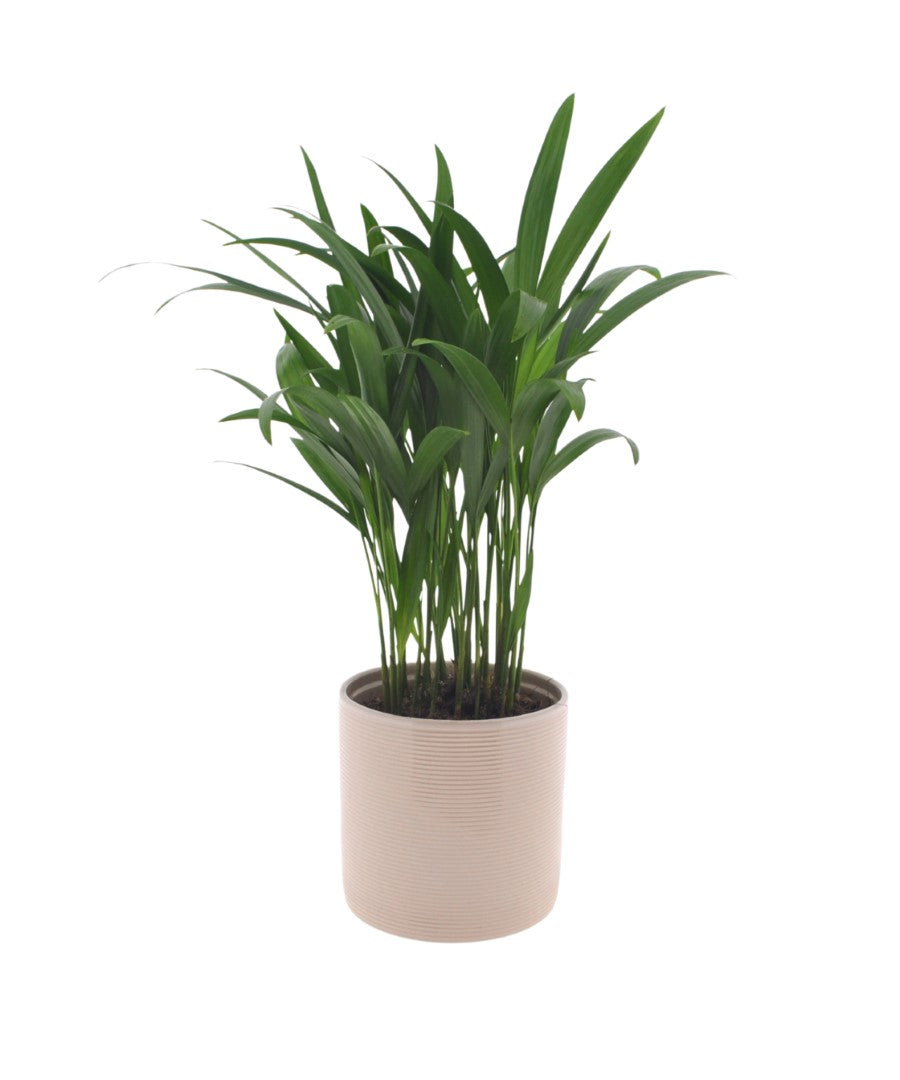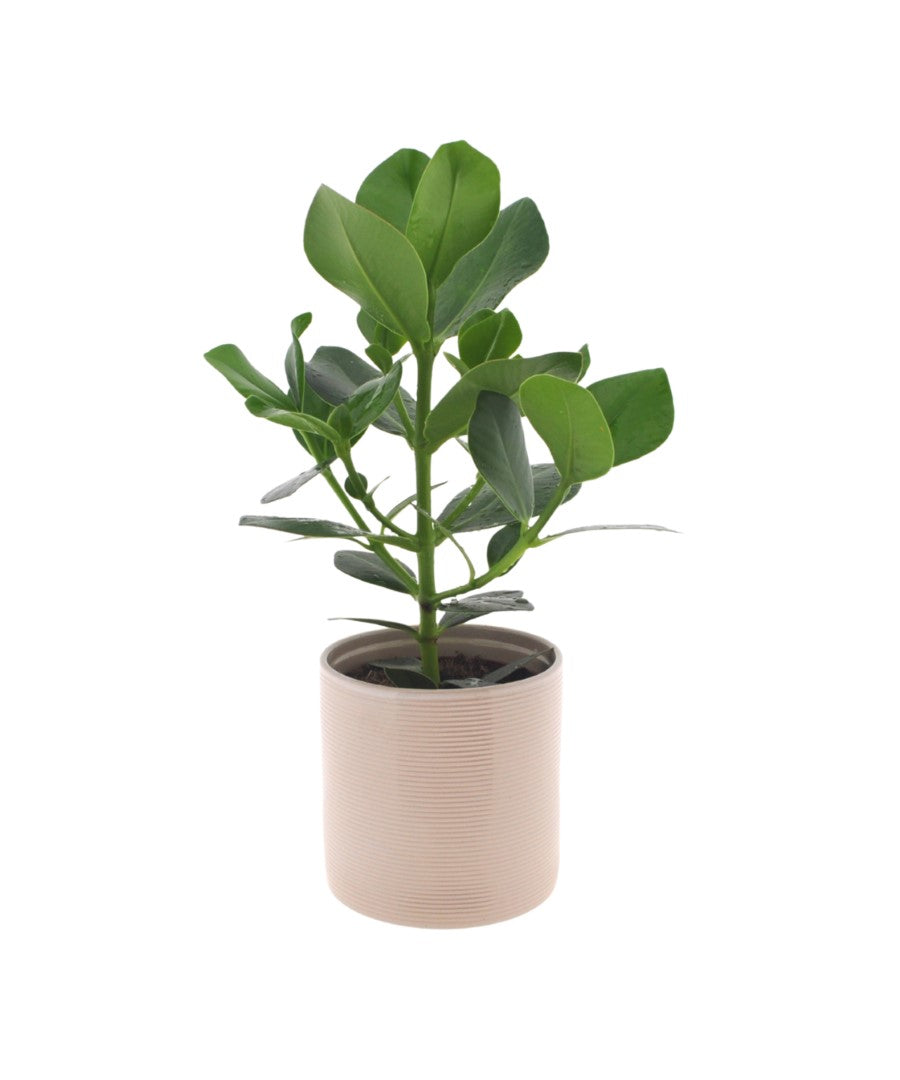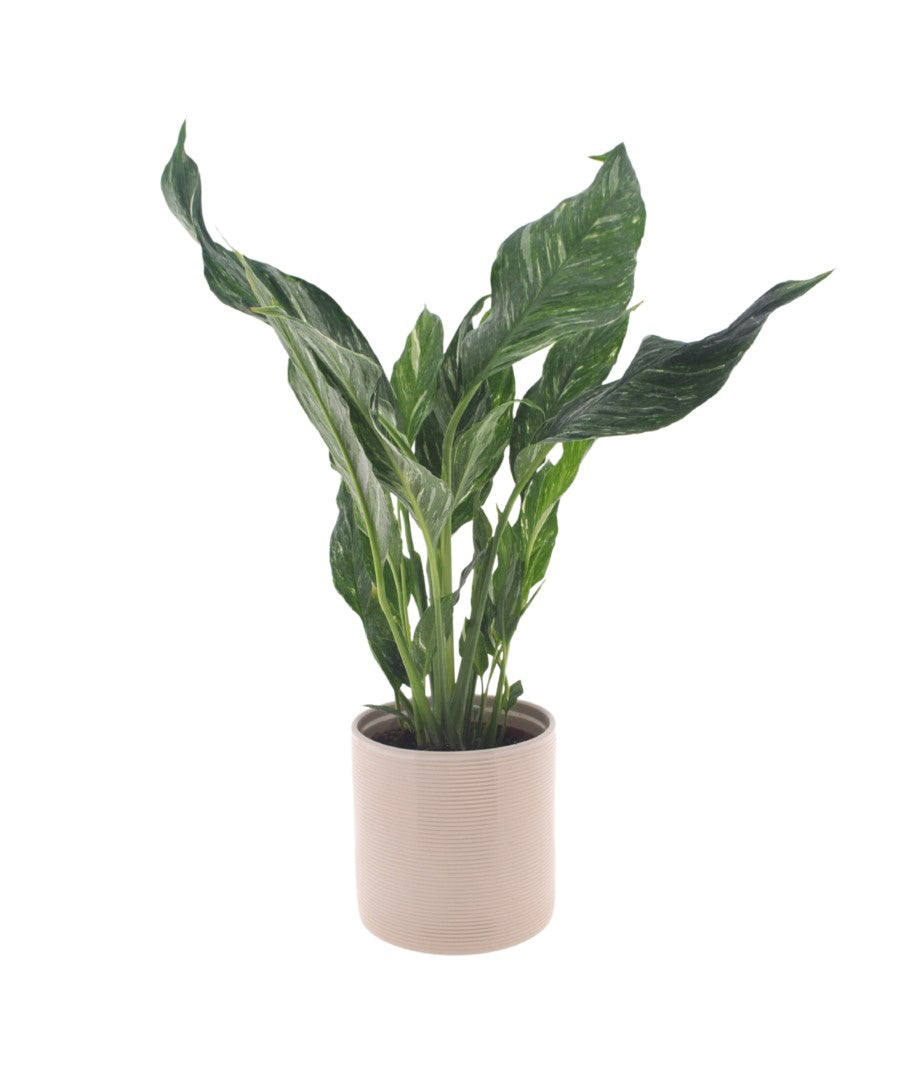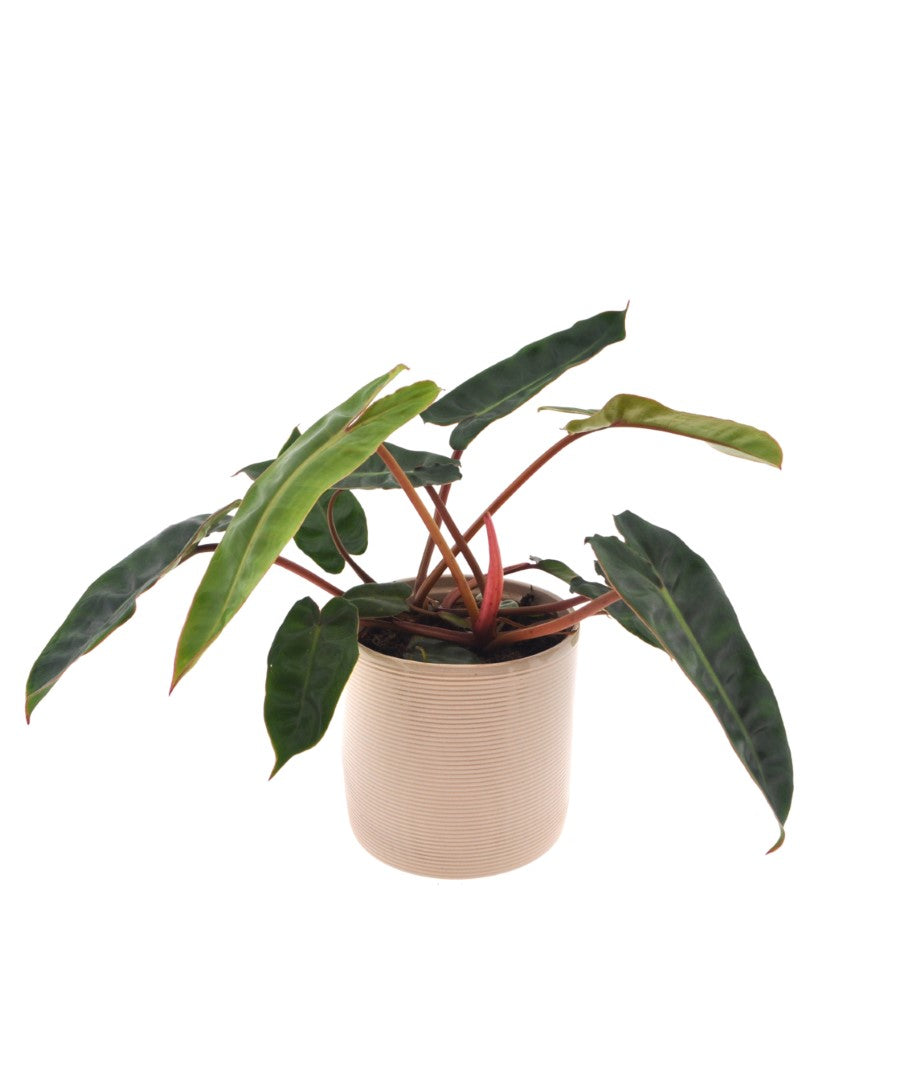Ontdek onze Sansevieria en meer..
Alles wat je wilt weten over de verzorging van je Sansevieria plant
De Sansevieria is ook bekend onder de naam studentenplant. Dat komt omdat het een zeer makkelijk te verzorgen plant is.
Deze kamerplant is afkomstig uit West-Afrika. Daarmee is het een uitstekende keuze voor zowel huizen als kantoren. Met de juiste verzorging kan jouw Sansevieria jarenlang meegaan. De bladeren zijn puntig en zwaardvormig, hij vrolijkt je interieur op met zijn luxe uitstraling.
De juiste plaats in je huis is een cruciale factor voor het succesvol verzorgen van de Sansevieria. Deze plant houdt van een plaats met indirect zonlicht. Maar hij kan zelfs ook overleven in een omgeving met weinig licht. Plaats je Sansevieria op een plek waar hij dagelijks enkele uren licht ontvangt. Dat is bij een raam op het oosten, noorden of westen. Vermijd daarbij wel direct zonlicht, anders verbranden de bladeren.
Een van de belangrijkste aspecten van het verzorgen van Sansevieria is het juiste waterregime. Je wil voorkomen dat de plant te veel water krijgt. Overmatig water geven leidt tot wortelrot, te weinig water resulteert in droge, uitgedroogde bladeren. Hier zijn enkele richtlijnen voor het water geven van Sansevieria:
Laat de grond opdrogen. Wacht tot de bovenste centimeters van de grond droog aanvoelen voordat je opnieuw water geeft. De Sansevieria verdraagt droogte beter dan te veel water.
Matig water geven. Geef eens in de 2 tot 4 weken water. Dat is afhankelijk van de temperatuur en luchtvochtigheid in je huis. In de winter heeft de Sansevieria minder water nodig.
Drainage. Zorg dat de pot waarin je Sansevieria groeit drainage gaten heeft om overtollig water af te voeren. Sta nooit toe dat de plant in een laag water staat. Dat beschadigt de wortels.
De Sansevieria heeft weinig voeding nodig. Af en toe voeden met een meststof mengsel bevordert de groei en vitaliteit van de kamerplant. Hier zijn enkele tips voor het voeden van de Sansevieria:
Frequentie. Voed je Sansevieria eenmaal per maand tijdens het groeiseizoen. Dat loopt van de lente tot de herfst. In de winter heeft de plant geen voeding nodig.
Verdun de meststof. Gebruik een vloeibaar meststof mengsel en verdun dit tot de helft van de aanbevolen sterkte, een Sansevieria heeft niet veel voeding nodig. Geef de plant vervolgens water met de verdunde meststof oplossing.
Niet overbemesten. Overbemesting kan schadelijk zijn voor Sansevieria, dus houd je aan de aanbevolen dosering en frequentie.
De Sansevieria hoeft niet vaak te worden verpot. Het kan wel nodig zijn om dit eens in de paar jaar te doen. Doe dat wanneer de plant te groot wordt voor zijn huidige pot. Volg deze stappen om je Sansevieria succesvol te verpotten:
Kies de juiste pot. Kies een pot die ongeveer 2-3 centimeter groter is dan de huidige pot. Zorg ervoor dat de nieuwe pot drainage gaten heeft.
Vul de nieuwe pot voor ongeveer een derde met hoogwaardige potgrond die goed doorlatend is.
Haal voorzichtig de Sansevieria uit zijn huidige pot en schud voorzichtig de overtollige grond van de wortels.
Plaats de Sansevieria in het midden van de nieuwe pot en vul met potgrond. Druk de grond lichtjes aan.
Geef de Sansevieria een kleine hoeveelheid water na het verpotten. Wacht vervolgens een paar dagen voordat je weer water geeft.
Wil je je Sansevieria-verzameling uitbreiden? Dan is het vermeerderen van Sansevieria door middel van stekjes een geweldige optie. Volg deze eenvoudige stappen:
- Selecteer een gezonde zijscheut. Snijd deze van de moederplant af met een schoon, scherp mes of met een snoeischaar.
- Laat de stek drogen. Laat de stek enkele dagen drogen totdat de snijwond is opgedroogd en er een eeltlaag op is gevormd.
- Plant de stek. Plant de stek in een pot met goed doorlatende potgrond. Zorg dat het onderste deel van de stek in de grond zit. Geef de stek wat water, maar vermijd overmatig water geven.
- Geduld. De stek zal na verloop van tijd wortels ontwikkelen en beginnen te groeien. Zorg ervoor dat je de nieuwe plant regelmatig water geeft en de juiste verzorging biedt.
- Voordat je het weet, heb je een nieuwe Sansevieria plant om van te genieten.
Slappe bladeren worden veroorzaakt door overwatering. Laat de grond volledig opdrogen voordat je weer water geeft. Controleer ook de wortels op tekenen van rot.
Verkleuring van de bladeren kan te wijten zijn aan te veel direct zonlicht. Verplaats je Sansevieria naar een plek met indirect zonlicht. De bladeren zullen na verloop van tijd hun normale kleur terug krijgen.
Bruine bladpunten kunnen worden veroorzaakt door lage luchtvochtigheid. Plaats een luchtbevochtiger in de buurt van je Sansevieria of besproei de bladeren met water om de luchtvochtigheid te verhogen.
Sansevieria kent verschillende soorten met unieke bladvormen en kleuren. Hier zijn enkele populaire soorten die je kunt overwegen:
Sansevieria Trifasciata. Deze soort staat bekend als de “Vrouwentong”. Hij heeft donkergroene bladeren met lichtere groene vlekken.
Sansevieria Cylindrica. Deze soort wordt gekenmerkt door ronde bladeren die rechtop groeien. De bladeren hebben een groene kleur met lichtere dwarsstrepen.
Sansevieria Moonshine. Met zijn zilverachtige bladeren is deze Sansevieria-soort een elegante toevoeging aan elke kamer.
Er zijn nog veel meer soorten Sansevieria om te ontdekken. Elk met zijn eigen unieke schoonheid!
